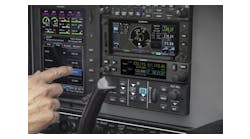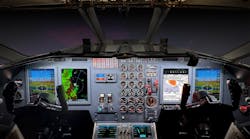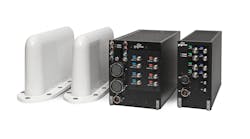Austin, Texas – 4DSP (www.4DSP.com), a technology design company with offices in Austin and the Netherlands, has announced it is officially launching live industry demonstrations of licensed NASA fiber optic sensing and 3D shape rendering technology that could help radically improve efficiencies, safety and performance in a wide variety of industries.
According to Pierrick Vulliez, founder and Managing Partner of 4DSP, the latest announcement is the culmination of several years of work as his company has been collaborating since 2007 with NASA in order to bring the technology to the point that it is commercially viable. “NASA’s break-through fiber optic sensing technology represents a 20-fold improvement over existing sensing solutions,” says Vulliez.
4DSP licensed the fiber optic sensing technology in June 2011 and was granted licensing rights to NASA’s 3D shape rendering technology on July 21, 2012. Vulliez notes that NASA-licensed technology could represent a quantum leap forward for industries as diverse as automotive, aerospace, oil & gas, nuclear energy, medical devices and wind energy. Past fiber optic sensing solutions have been limited by both processing speed and high deployment costs. 4DSP’s fiber optic sensing and 3D shape rendering technology will enable product designers in more industries to create highly scalable fiber optic sensing solutions capable of monitoring tens of thousands of sensors up to 100 times per second.
"NASA is pleased that 4DSP has licensed and is commercializing NASA’s fiber optic sensing and 3D shape-rendering technologies," said David McBride, director of NASA's Dryden Flight Research Center. "NASA Dryden originally developed Fiber Optic Wing Shape Sensor technology to measure and display the shape of an aircraft's wings in flight," he continued. "There is also great potential here for improving aircraft safety when the technology is used to monitor the aircraft structure. As fiber optic sensors like this use thousands of sensors on a few fibers without the weight and complexity of conventional sensors such as strain gages, this technology has the potential to revolutionize structural monitoring and data analysis in a wide range of fields unrelated to aerospace," McBride said.
McBride noted that components of the technology were initially developed at NASA's Langley Research Center, and NASA Dryden then matured and added components to the technology making it what it is today. "These commercialization partnerships and spin-offs reflect an important NASA goal and tangibly demonstrate taxpayer investment," McBride concluded.
4DSP’s Vulliez believes the NASA fiber optic sensing and 3D shape rendering technology has the potential to save industries and consumers millions, if not billions, of dollars. He says: “From commercial aircraft manufacturing design to surgical endoscopes, the applications of the NASA fiber-optic sensing technology are potential game-changers.”
For more information and a live demo of the NASA fiber optic sensing technology visit: http://fos.4dsp.com/.
About 4DSP
4DSP is an innovative company specializing in low power, low weight and compact FPGA based signal and image processing systems. Headquartered in Austin, Texas, USA, with offices in the Netherlands, 4DSP is a developer of reconfigurable computers of advanced architecture which offer customers maximum flexibility and scalability. 4DSP's hardware platforms deliver unmatched performance for advanced digital signal processing (DSP) applications for embedded computing systems. More information about 4DSP can be found at http://www.4dsp.com.


